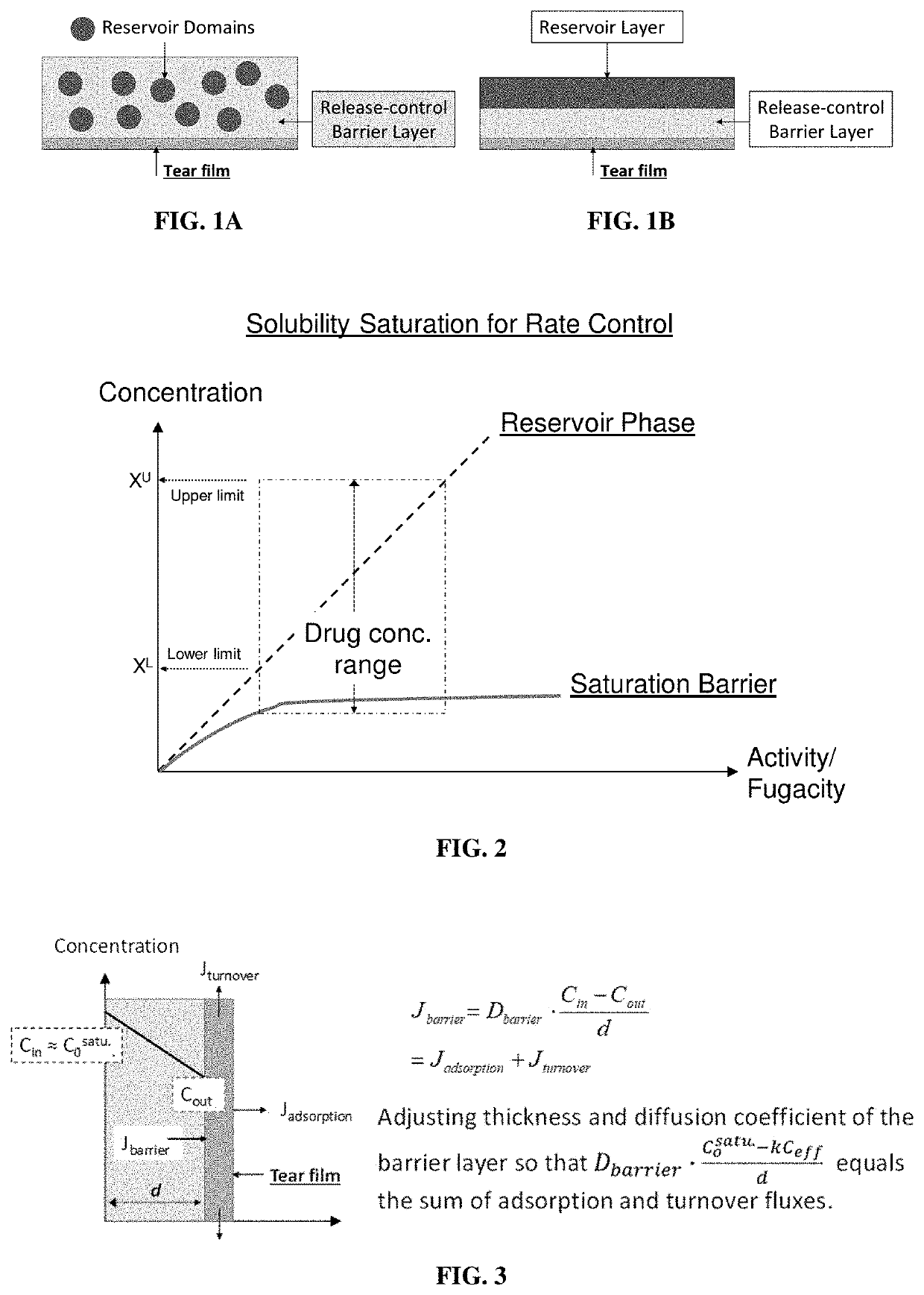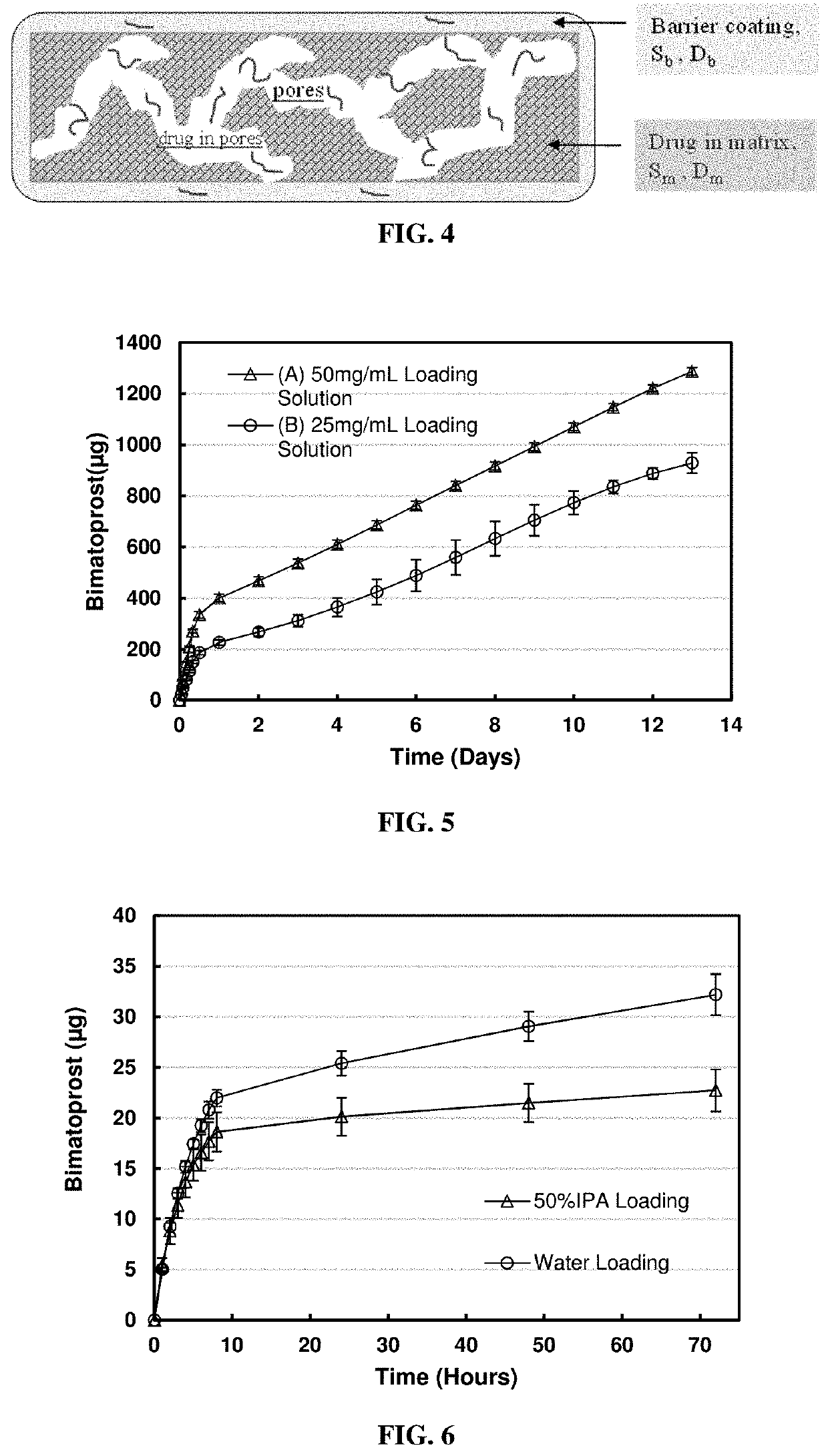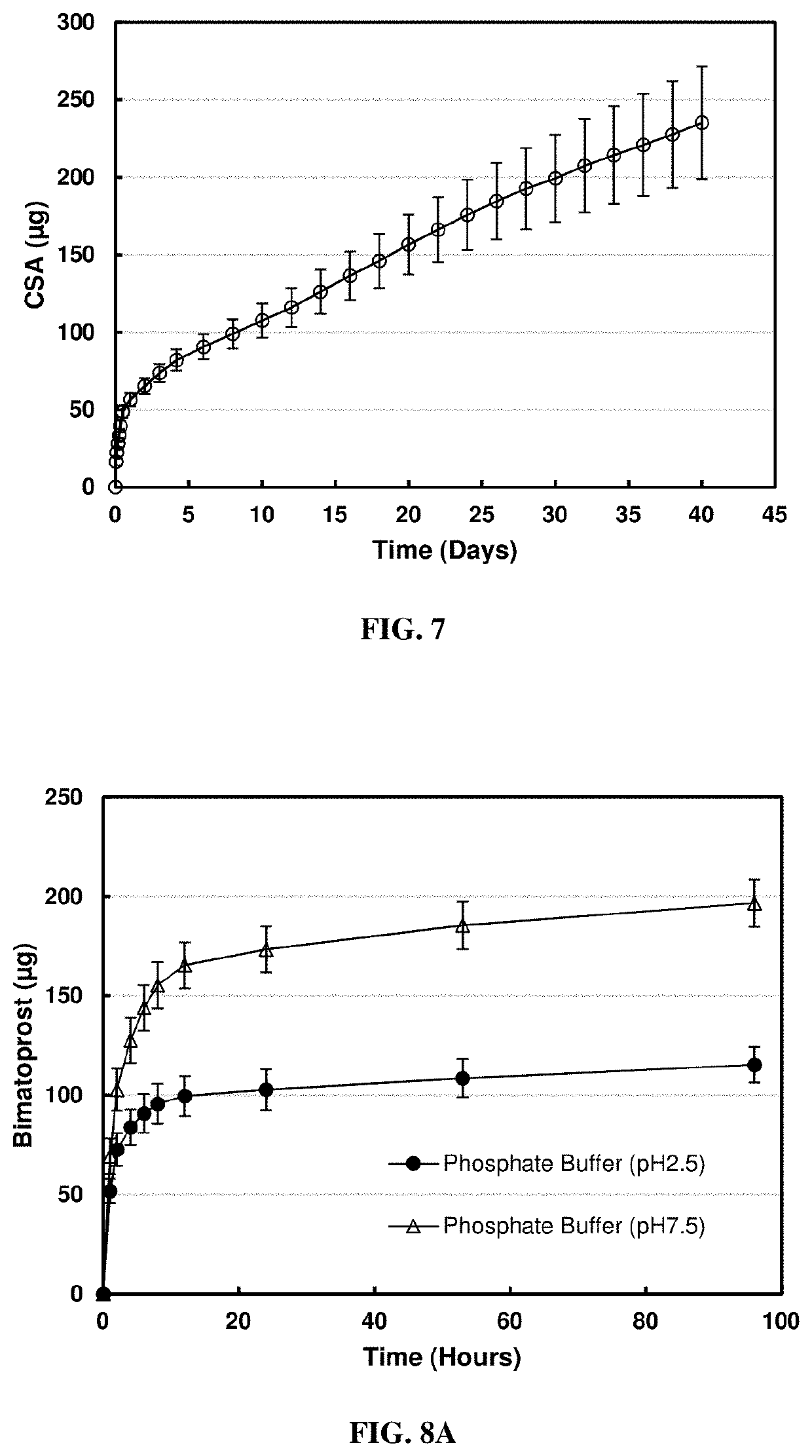High-precision drug delivery by dual-domain ocular device
a dual-domain, ocular device technology, applied in the field of drugeluting nanoengineered ocular devices, can solve the problems of difficult control of burst dosage, increased intraocular pressure, and difficulty in delivering high-quality drugs to the ey
- Summary
- Abstract
- Description
- Claims
- Application Information
AI Technical Summary
Benefits of technology
Problems solved by technology
Method used
Image
Examples
example 1
[0056]This example provides an example of fabrication of silicone-hydrogel dual-domain contact lens.
[0057]The soft contact lenses were prepared by polymerizing 2-hydroxyethyl methacrylate (HEMA 8%) along with highly oxygen permeable silicone monomer SIGMA (30%), N.N-dimethylacrylamide (DMA˜30%), n-hexanol (23% to create porosity), free-radical thermal initiator 2,2′-azobis-(2-methylpropionitrile) AIBN, polyvinylpyrrolidone K-90 (5% for wetting) and ethylene glycol dimethacrylate (EGDMA, 1% for crosslinking). The mixture of monomer mixed was injected into a polypropylene contact lens mold. After curing at 120° C. for 2 hours, contact lenses were washed with isopropanol and water mixture (50%, v / v) to remove initiator residue and unreacted monomers. For nanoparticle loaded contact lenses, nanoparticles were added into pre-cured monomer solution subsequent to polymerization.
example 2
[0058]Silicone-hydrogel lens loaded with bimatoprost (a hydrophobic drug, log P˜3.2) by soaking lens in hydrophobic solvent hexanol (log P=2.03): For the drug loading process, three silicone hydrogel soft contact lenses were soaked in 0.5 ml bimatoprost hexanol solution with a concentration of 50 mg / ml for two days; another three soft contact lenses were soaked in 0.5 ml bimatoprost hexanol solution with a concentration of 25 mg / ml for two days. Each group of lenses was rinsed in 5 ml water for 30 seconds.
[0059]For the in vitro release condition, each lens was placed in 0.5 ml phosphate buffer (pH 7.5, 10 mM), at predetermined time intervals, 0.5 ml release medium was withdrawn and replaced with fresh phosphate buffer to simulate the tear exchange sink condition. The amount bimatoprost released into the phosphate buffer medium was measured using a UV / VIS spectrophotometer at a wavelength of 210 nm. Concentrations and masses of released bimatoprost at each kinetic time point were cal...
example 3
[0061]Silicone-hydrogel contact lens loaded with bimatoprost by soaking lens in a medium with different hydrophilicity—Water and Water / Isopropanol (IPA) mixture (50% v / v): For the drug loading process, three soft contact lenses were soaked in 1 ml bimatoprost water / isopropanol (50% v / v) solution with a concentration of 0.5 mg / ml for two days; another three soft contact lenses were soaked in 1 ml bimatoprost water solution with bimatoprost concentration of 0.5 mg / ml for two days. Each group of lenses was rinsed in 5 ml water for 30 seconds.
[0062]For the in vitro release condition, each lens was placed in 0.5 ml phosphate buffer (pH 7.5, 10 mM), at predetermined time intervals, 0.5 ml release medium was withdrawn and replaced with fresh phosphate buffer to simulate tear exchange sink condition. The amount bimatoprost released into the phosphate buffer medium was measured using a UV / VIS spectrophotometer at a wavelength of 210 nm.
[0063]The cumulative mass release profile of the release...
PUM
| Property | Measurement | Unit |
|---|---|---|
| pH | aaaaa | aaaaa |
| pH | aaaaa | aaaaa |
| transparent | aaaaa | aaaaa |
Abstract
Description
Claims
Application Information
 Login to View More
Login to View More - R&D
- Intellectual Property
- Life Sciences
- Materials
- Tech Scout
- Unparalleled Data Quality
- Higher Quality Content
- 60% Fewer Hallucinations
Browse by: Latest US Patents, China's latest patents, Technical Efficacy Thesaurus, Application Domain, Technology Topic, Popular Technical Reports.
© 2025 PatSnap. All rights reserved.Legal|Privacy policy|Modern Slavery Act Transparency Statement|Sitemap|About US| Contact US: help@patsnap.com



